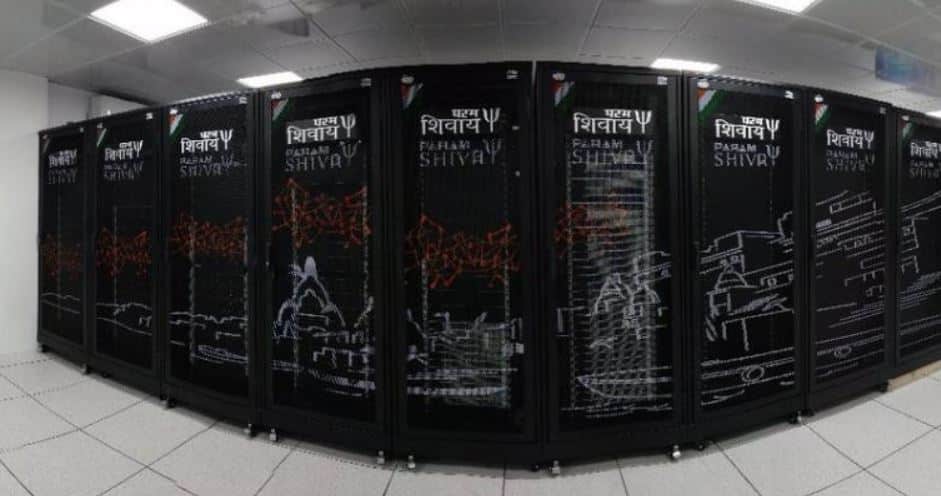Table of Contents
The Government’s Revised Crop Residue Management Guidelines: A Step towards Efficient Ex-Situ Management
The government has recently revised the crop residue management guidelines, with a focus on enabling efficient ex-situ management of paddy straw. This move comes as the benefits of crop residue management and adverse effects of residue burning on soil quality are being given due attention. The revised criteria for crop residue management will be implemented in Punjab, Haryana, Uttar Pradesh, and Delhi, where paddy straw is primarily produced.
Significance of Crop Residue Management
Crop residue management plays a crucial role in agricultural practices. Harvesting various crops generates a large volume of residues both on and off-farm. The Ministry of New and Renewable Energy estimates that around 500 million tonnes of crop residues are generated annually. These residues have various uses, such as livestock feed, bio-gas generation, composting, biomass energy production, and fuel for domestic and industrial use. However, a significant portion of crop residues is burnt ‘on-farm’, primarily to clean the field for sowing the next crop.
The problem of on-farm burning of crop residues has intensified in recent years due to a shortage of labor, high removal costs, and mechanized harvesting. This practice is particularly prevalent in Haryana, Punjab, Uttar Pradesh, and West Bengal. The National Green Tribunal has already directed and prohibited agricultural residue burning in certain areas. Paddy stubble burning, in particular, is a common practice in the Indo-Gangetic plains of Punjab, Haryana, and Uttar Pradesh.
Features of In-Situ Crop Residue Management
In-situ crop residue management involves leaving the crop residue in its natural state on the field, without removal. This practice helps maintain soil health and fertility while reducing the risk of pests and diseases. There are several techniques used for in-situ crop residue management:
1. Mulching:
Mulching entails leaving crop residue on the soil surface to protect it from erosion and retain moisture. It also suppresses weeds and provides nutrients to the soil.
2. No-till farming:
In this method, crops are planted without disturbing the soil. Crop residue is left on the surface, and seeds are planted through it. No-till farming helps conserve soil moisture, reduce erosion, and improve soil quality.
3. Strip-till farming:
This method is similar to no-till farming but involves tilling only a narrow strip of soil where seeds will be planted. Crop residue is left on the soil surface between the tilled strips, providing a suitable environment for seed germination while conserving soil moisture and reducing erosion.
4. Cover crops:
Cover crops are planted between cash crops to provide ground cover and add nutrients to the soil. They can also be left on the soil surface as mulch.
5. Crop rotation:
Alternating the type of crops grown on a field each season can help reduce erosion, nutrient depletion, and improve soil health.
Features of Ex-Situ Crop Residue Management
Ex-situ crop residue management involves removing agricultural waste from the field for various uses such as composting, animal feed, and industrial processes. This method provides a natural source of nutrients for the soil and helps reduce air pollution caused by burning residue. Some ex-situ crop residue management techniques include:
1. Biomass power generation:
Crop residues can be used as a source of fuel for biomass power generation. By burning crop residues, electricity or heat can be produced.
2. Animal feed:
Crop residues can serve as a source of animal feed, especially for livestock like cattle, sheep, and goats. The residues can be stored and used as feed during dry seasons when forage is scarce.
3. Composting:
Crop residues can be composted along with other organic materials like manure, leaves, and grass clippings to produce a nutrient-rich soil amendment. This improves soil fertility and structure.
4. Biochar production:
Biochar, a type of charcoal, can be produced by heating crop residues in the absence of oxygen. It can be used as a soil amendment to enhance fertility, water retention, and crop productivity.
5. Industrial uses:
Crop residues can be utilized in various industrial processes, including paper production, textiles, and building materials.
Effects of Crop Residue Burning
Burning crop residues has several adverse effects on soil quality and the environment:
1. Loss of nutrients:
When crop residues are burned, essential nutrients like nitrogen, phosphorus, potassium, and sulfur are lost. The burning of one tonne of rice straw, for example, leads to the loss of approximately 5.5 kg of nitrogen, 2.3 kg of phosphorus, 25 kg of potassium, and 1.2 kg of sulfur.
2. Impact on soil properties:
The heat from burning residues raises soil temperature, leading to the death of beneficial soil organisms. Frequent residue burning can result in a complete loss of microbial population and reduction in nitrogen and carbon levels in the topsoil, which are crucial for crop root development.
3. Emission of greenhouse gases:
Crop residue burning is a significant source of greenhouse gases, such as methane, carbon monoxide, nitrous oxide, and other hydrocarbons. These emissions contribute to climate change and air pollution.
Updated Crop Residue Management Guidelines
The government’s updated crop residue management guidelines include the following provisions:
1. Bilateral agreements:
Beneficiaries/aggregators, such as farmers, rural entrepreneurs, cooperative societies of farmers, farmer producer organizations (FPOs), and panchayats, will enter into bilateral agreements with enterprises that utilize paddy straw. These agreements will form the basis for techno-commercial pilot projects for the supply chain of paddy straw.
2. Financial assistance:
The government will provide financial assistance for the capital cost of machinery and equipment required for crop residue management. The working capital can be financed jointly by the industry and the beneficiary or through sources like the Agricultural Infrastructure Fund (AIF), NABARD Financial, or financing from financial institutions.
3. Storage and preparation of paddy straw:
The beneficiary will arrange and prepare the land for the storage of collected paddy straw as guided by the end-use industry.
4. Project proposal-based assistance:
Financial assistance will be provided for the establishment of a paddy straw supply chain, including machines and equipment like tractors, cutters, balers, loaders, and telehandlers. State governments will approve these projects through a project sanctioning committee.
5. Financial support breakdown:
The government will provide 65% of the project cost, while the industry will contribute 25% and act as the primary consumer of the feedstock. The remaining 10% will be contributed by farmers, rural entrepreneurs, cooperative societies, FPOs, or panchayats who directly benefit from the project.
Effects and Outcomes
The implementation of the revised guidelines is expected to have several positive effects:
– The initiative will supplement in-situ crop residue management options.
– Approximately 1.5 million metric tonnes of surplus paddy straw, which would have otherwise been burnt in fields, will be collected over three years.
– About 333 biomass collection depots will be built in states like Punjab, Haryana, Uttar Pradesh, and Madhya Pradesh.
– Air pollution caused by crop residue burning will be significantly reduced.
– The initiative will create employment opportunities, equivalent to approximately 9,00,000-man days.
– It will encourage the establishment of a robust supply chain for paddy straw, allowing its use in power generation, heat generation, bio-CNG, and other applications.
– The establishment of the supply chain will attract new investments.
Fun Fact: Did you know?
Crop residues, especially rice straw, have been traditionally used in many countries to make rice paper, a thin and translucent kind of paper used for writing, artwork, and lantern making.
In conclusion, the recent revision of crop residue management guidelines by the government aims to enhance ex-situ management of paddy straw and address the adverse effects of residue burning on soil quality. The guidelines provide opportunities for both in-situ and ex-situ management techniques, ensuring the sustainable utilization of crop residues. By implementing these guidelines, the government aims to reduce air pollution, preserve soil fertility, and promote a more efficient agricultural system.
Mutiple Choice Questions
1. What is the purpose of the revised crop residue management guidelines introduced by the government?
a) To promote efficient ex-situ management of paddy straw
b) To enforce stricter regulations on residue burning
c) To encourage in-situ crop residue management techniques
d) To improve soil quality in agricultural fields
Explanation: The purpose of the revised crop residue management guidelines introduced by the government is to enable efficient ex-situ management of paddy straw generated. This means that the guidelines aim to promote the proper handling and utilization of crop residues instead of burning them.
2. Which states are primarily affected by the on-farm burning of crop residues?
a) Punjab, Haryana, Uttar Pradesh, and West Bengal
b) Maharashtra, Gujarat, Karnataka, and Tamil Nadu
c) Rajasthan, Madhya Pradesh, Bihar, and Odisha
d) Assam, Meghalaya, Mizoram, and Nagaland
Explanation: The on-farm burning of crop residues is predominant in Punjab, Haryana, Uttar Pradesh, and West Bengal, according to available estimates.
3. What is the technique used in in-situ crop residue management that involves leaving crop residue on the soil surface to protect the soil from erosion?
a) Mulching
b) No-till farming
c) Strip-till farming
d) Cover cropping
Explanation: Mulching is the technique used in in-situ crop residue management that involves leaving crop residue on the soil surface. This practice helps to protect the soil from erosion, retain moisture, suppress weeds, and provide nutrients to the soil.
4. What is the term used to describe the removal of agricultural waste from the field for use as compost, firewood, or animal feed?
a) In-situ crop residue management
b) Ex-situ crop residue management
c) Biomass power generation
d) Composting
Explanation: Ex-situ management of crop residue refers to the removal of agricultural waste from the field for use as compost, firewood, or animal feed. This technique helps to convert crop residues into useful products and reduce air pollution caused by burning.
5. What is the estimated loss of nutrients when one tonne of rice straw is burned?
a) 5.5 kg of Nitrogen, 2.3 kg of phosphorus, 25 kg of potassium, and 1.2 kg of sulfur
b) 2.3 kg of Nitrogen, 1.2 kg of phosphorus, 5.5 kg of potassium, and 25 kg of sulfur
c) 25 kg of Nitrogen, 1.2 kg of phosphorus, 5.5 kg of potassium, and 2.3 kg of sulfur
d) 1.2 kg of Nitrogen, 5.5 kg of phosphorus, 2.3 kg of potassium, and 25 kg of sulfur
Explanation: It is estimated that the burning of one tonne of rice straw accounts for the loss of 5.5 kg of Nitrogen, 2.3 kg of phosphorus, 25 kg of potassium, and 1.2 kg of sulfur, besides organic carbon. Burning crop residues leads to the loss of important nutrients that are beneficial for soil fertility and crop growth.
(Note: Due to the nature of the content, the questions and explanations may not align perfectly. Please review and adjust as needed.)
Brief Summary | UPSC – IAS
The Indian government has updated guidelines for crop residue management, with a focus on efficient ex-situ management of paddy straw in four states. The updated rules allow for bilateral agreements between farmers and enterprises to build pilot projects for the supply chain of paddy straw. The government will provide financial support for machinery and equipment, with the primary industry contributing to the project’s costs. The initiative aims to reduce the burning of crop residues, which contributes to air pollution and soil degradation, whilst generating employment opportunities and promoting sustainable agriculture practices.










